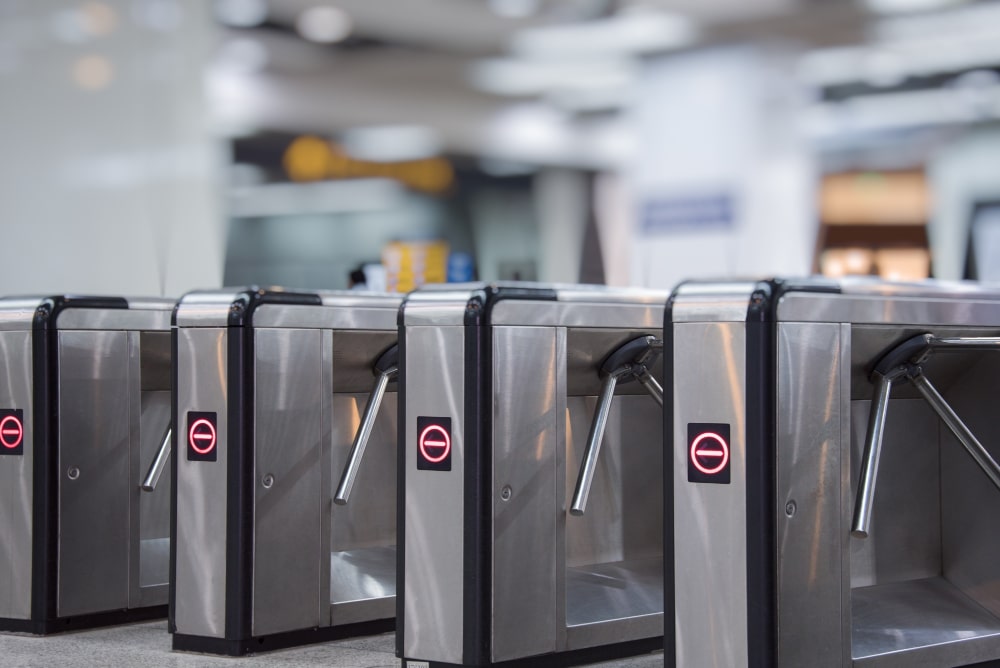Are you ready to unlock the secrets of safeguarding knowledge in the bustling halls of libraries? In a world where every book is a treasure and every page holds the key to enlightenment, protecting these invaluable collections is a sacred duty. Library security gates are like protectors, stopping people from stealing books. Let’s explore how these gates work and how they help keep libraries safe. Follow along as we discover the best ways to make sure libraries remain safe and full of wonderful books for everyone to enjoy.
Understanding the need for library security gates
Libraries are like knowledge treasure troves, containing a wealth of important information and priceless cultural artifacts. However, it is important that everything within the library be kept secure. Unauthorized book theft disrupts the entire system of information exchange. Library security gates are useful in this situation. They act as vigilant guardians, preventing unlawful book theft. These smart gates can recognize unique tags on library materials and will sound an alarm if someone tries to take a book that hasn’t been checked out. This helps everyone feel safe while exploring and learning, as well as safeguarding the library’s materials.
Choosing the right library security gates
Selecting the right library security gates is a crucial choice that depends on various factors, such as the library’s layout, foot traffic, and budgetary limitations. The following are some essential factors to help you in your selection process:
- Detection accuracy: Select security gates with advanced detecting technology to reduce false alarms and guarantee accurate identification of things that have been tagged. Look for gates that offer adaptable sensitivity settings for handling different types of library materials.
- Integration capabilities: Choose security gates that seamlessly integrate with your library’s existing management systems, including RFID tagging systems and library automation software. By expediting the circulation process, this integration improves operational effectiveness and lowers the possibility of mistakes.
- Durability and aesthetics: Give priority to security gates made of sturdy materials that can withstand constant use. In addition, take into account the gates’ aesthetic appeal to make sure they blend in with the library’s atmosphere without sacrificing functionality.
- User-friendly features: To improve the user experience for both library employees and users, choose security gates that have user-friendly interfaces and intuitive design features. Ease of use and quick reaction to security breaches are enhanced by features like audible alerts and visible indicators.
- Scalability and flexibility: Select security gates with scalability in mind to meet growing security requirements and future growth. Furthermore, give priority to gates that offer flexible configuration choices to meet the specific needs of your library environment.

Implementing effective security protocols
In addition to the installation of strong security gates, implementing comprehensive security protocols is vital for protecting library collections effectively. Take into account these recommended practices:
- Tagging and inventory management: Apply a methodical strategy for attaching RFID or other security tags to library resources. Make sure every item is correctly tagged and accounted for by conducting routine inventory audits.
- Staff training and vigilance: Provide thorough training to library staff on safety measures, including how to respond to security alerts and manage potential security incidents carefully and professionally. Encourage staff members to be watchful and give them the authority to step in when they see questionable activities.
- Public awareness and education: Inform library users of the value of protecting library resources and following borrowing policies. Post visible notices close to the security gates that clearly state what happens if someone tries to take unprocessed items off the property.
- Collaboration with law enforcement: Encourage collaborations with neighborhood law enforcement organizations to proactively address security issues. Create channels of communication for the quick reporting of security issues and work together to develop measures that effectively reduce risks.
Conclusion
Library security gates are like faithful guardians defending the priceless items kept in the sacred corridors of libraries. Libraries may efficiently secure their collections and promote an environment of inquiry and learning by developing effective security measures and investing in dependable security solutions. As custodians of knowledge, let us ensure that the value of our libraries remains unaltered, preserving the legacy of wisdom for generations to come.
FAQs
1. What are library security gates?
Library security gates are electronic devices installed at entrances and exits to detect unauthorized removal of library materials. They work by emitting electromagnetic fields and detecting special tags attached to library items. If a tagged item passes through without being properly checked out, the gates trigger an alarm.
2. Can library security gates be customized?
Yes, most gates offer customization options to suit specific requirements. You can adjust settings such as detection sensitivity and alarm thresholds to minimize false alarms while ensuring the effective protection of library materials.
3. Do security gates interfere with RFID tagging systems?
No, security gates are designed to work seamlessly with RFID tagging systems. In fact, they often integrate with these systems to enhance security and streamline circulation processes. The gates can detect RFID tags and trigger alarms if tagged items pass through without authorization.
4. Are security gates difficult to install?
Not necessarily. Many modern security gates are designed for easy installation and require minimal maintenance. Installation typically involves mounting the gates at entrance and exit points, and maintenance tasks usually consist of periodic cleaning and software updates to ensure optimal performance. Additionally, manufacturers often provide user manuals and technical support to assist with installation and troubleshooting.


































